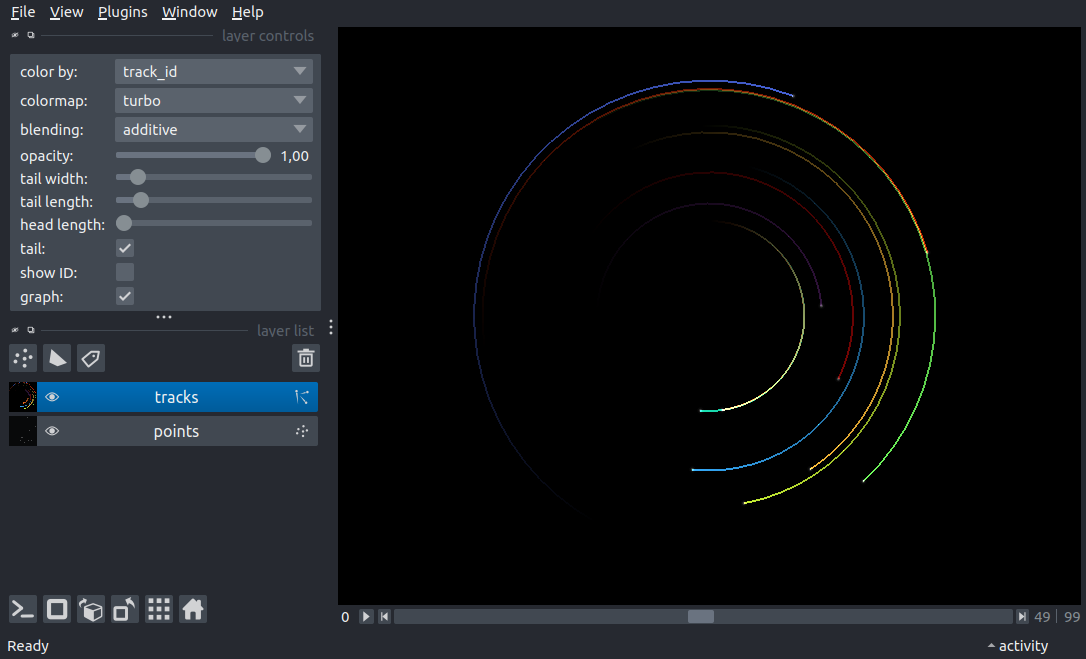Note
Go to the end to download the full example code
Tracks 2D#

import numpy as np
import napari
def _circle(r, theta):
x = r * np.cos(theta)
y = r * np.sin(theta)
return x, y
def tracks_2d(num_tracks=10):
""" create 2d+t track data """
tracks = []
for track_id in range(num_tracks):
# space to store the track data and features
track = np.zeros((100, 6), dtype=np.float32)
# time
timestamps = np.arange(track.shape[0])
radius = 20 + 30 * np.random.random()
theta = timestamps * 0.1 + np.random.random() * np.pi
x, y = _circle(radius, theta)
track[:, 0] = track_id
track[:, 1] = timestamps
track[:, 2] = 50.0 + y
track[:, 3] = 50.0 + x
track[:, 4] = theta
track[:, 5] = radius
tracks.append(track)
tracks = np.concatenate(tracks, axis=0)
data = tracks[:, :4] # just the coordinate data
features = {
'time': tracks[:, 1],
'theta': tracks[:, 4],
'radius': tracks[:, 5],
}
graph = {}
return data, features, graph
tracks, features, graph = tracks_2d(num_tracks=10)
vertices = tracks[:, 1:]
viewer = napari.Viewer()
viewer.add_points(vertices, size=1, name='points', opacity=0.3)
viewer.add_tracks(tracks, features=features, name='tracks')
if __name__ == '__main__':
napari.run()